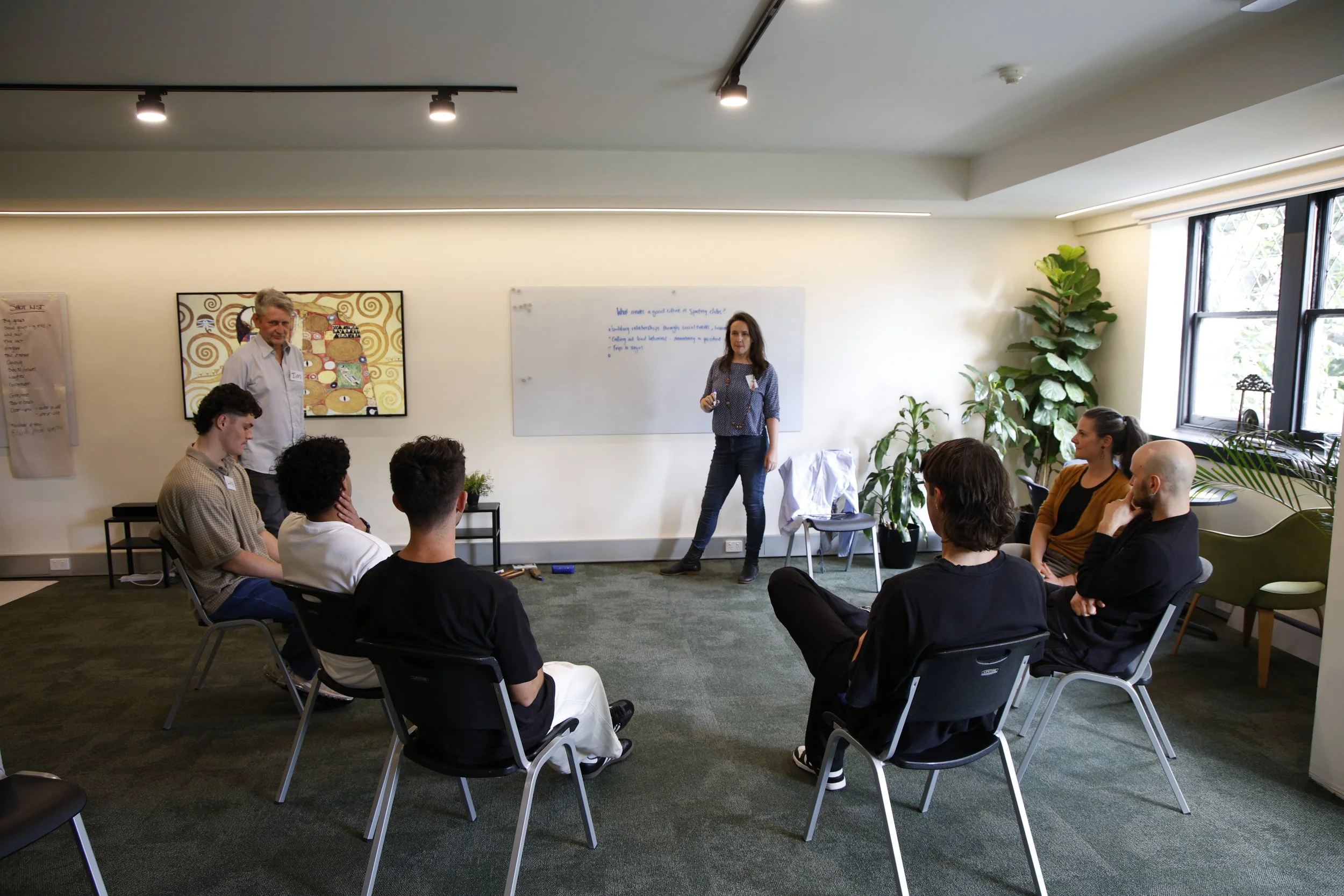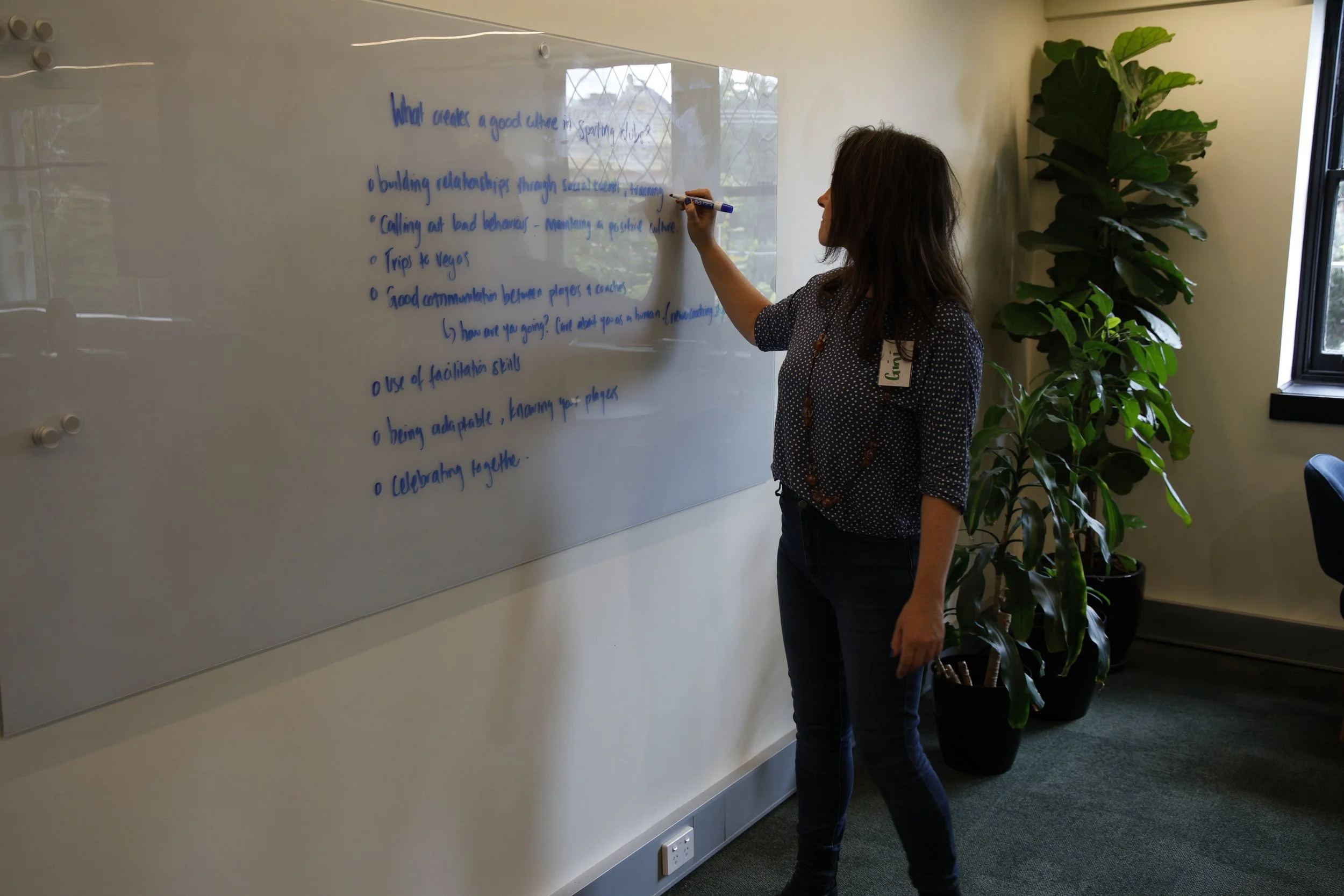How to run effective team meetings and project meetings?
How to run effective team meetings
And how to get past ‘stuckness’
It’s not unusual for projects to stall and for a team’s collaborative efforts to falter. The question is how to get a project and a team back on track? In this article Groupwork Centre co director Virginia Gough reflects on a recent experience within the organisation - and how the team regained focus, shared purpose and forward momentum.
Last week, four of us at Groupwork Centre came together to move a project forward that had stalled due to competing priorities, leave, and some important feedback that required deeper thinking. Before meeting we set the scene for success by:
Putting careful thought into who needed to be at the meeting to help us get unstuck
Consulting with others who couldn't attend, so we could incorporate their perspectives into the conversation e
Giving ourselves plenty of time for the meeting so as not to rush the process, given the high stakes.
We also incorporated the following elements into our meeting to help us along.
Begin with a grounding practice
At Groupwork Centre, we always start our meetings with an Acknowledgement of Country and a centring – a moment of grounding – to help us intentionally come into the new space. Centering or grounding practices support team members to arrive fully and with focus and provide a moment to pause and notice what is present. It has become an essential practice when working remotely and jumping between online meetings.
Example centring exercise:
"Take a moment to sit back in your chair, place both feet on the ground. Take a few deep breaths. Notice the sounds around you—birds, traffic, movement in the house. Notice how your body is feeling. What are you bringing to this –meeting today? Is your mind busy, calm, or distracted? Notice your heart—does it feel full, aching, expansive? And your gut—is it tight or soft? Is there anything you want to soften or let go of to support you in being present today? Breathe, pause, wriggle your fingers and toes, and when you're ready, open your eyes and look at the beautiful people in the room."
Prioritise connection before content - do a check-in
After the centring, we moved into a check-in. If we know someone is tired, distracted, or holding onto something that could get in the way of achieving our shared purpose, it’s helpful to acknowledge it. These “distractions” can contribute to further stuckness if left unspoken. A simple “How are you? Is there anything you need to share before we start?” can be incredibly useful.
Here are some reflections shared during our check-in that helped to clear the air:
“I’ve noticed that I’m finding it hard to listen deeply at the moment. I tend to jump in and speak over others, and I think that’s due to workload and being more tired than usual. I want you to know I’m aware of this, and I’ll try to listen more deeply and speak after others have had their turn. If you could help me with that, I’d appreciate it.”
“The fact that we haven’t been able to complete this project has been frustrating for me, and I know I’ve brought that energy into previous meetings. I feel like I’ve let go of that now, and I hope it will support our process today.”
“I am feeling nervous because one of the priority areas to be discussed is very important to me and given the feedback I have read so far feels similar to many other occasions where I have needed to fight for it to remain a priority.”
“I haven’t had a chance to read through the latest material. Can we take some time to review it before we dive in?”
By bringing in and acknowledging what might get in the way of our work together, we were able to use this information to plan our time together, give context to the work ahead and to avoid hidden tensions that could have hindered progress.
A round to set the agenda
The final foundational piece was to do ‘a round’. A round is a simple process in which each person takes it in turn to share their reflections – in this case on the project. This isn’t something we always do before an agenda is formed, but in this instance, we felt it was important given what came up during the check-in. This round helped us clarify our purpose and ensured the agenda we created would cut through our stuckness.
Everyone took a turn sharing their reflections on the project so far and any emergent, contextual or new knowledge we had that would help paint a picture of the context we found ourselves in. This provided us with the information we needed to craft an effective agenda that was focused on what was most important to move us forward.
It might seem like a lengthy process just to get to the agenda, but it meant that the agenda we ended up with was targeted and focused on addressing our current challenges.
At Groupwork Centre, we often use the phrase “connection before content” or “go slow to go fast.” This is a perfect example of that philosophy in action.
Sample agenda
Here’s the 3-hour agenda we followed, including the setup (1-5) that took 60 minutes:
Welcome, Acknowledgement, and Centring – 5 minutes
Check-in – 15 minutes
Round (sharing reflections) – 25 minutes
Agreeing on our purpose – 5 minutes
Agenda gather and sort – 10 minutes
Agenda items – 100 minutes
Next steps – 10 minutes
How did we go – evaluation – 5 minutes
Check-out – 5 minutes
Close
Allow ample time for your team meeting
A 3-hour project meeting… really? Well, yes … sometimes … when there is stuckness and when collaboration is the pathway out, spending three hours together can be much more efficient and go a lot further than lots of phone calls, emails, slack messages and miscommunications (to name a few). Get the right people in the room, carve out the time, allocate a facilitator (we can help with that), and do the deep diving that is needed to get to the other side.
The Result
Taking the time to ground ourselves and check in with each other before diving into the content meant we were able to focus our energies on what mattered most. What could have been a meeting full of frustration and tension ended up being a focused and generative discussion with an agreed way forward. It was a highly effective team meeting. And the principle of “connection before content” helped us get unstuck and gave us the clarity we needed to move the project forward and increase collaboration. Sure there were moments when our self-awareness slipped, where we fell into unhelpful behaviours, but the setup enabled us to bounce back quickly and with ease.
Effective team meetings aren’t just about following an agenda. They’re about creating an environment where people feel seen and heard, where challenges are acknowledged and where collaboration is nurtured from the outset. When we take the time to connect first, we set ourselves up for success – in the meeting and beyond.
****
Our two day facilitation training short course provides participants with the principles and skills to design meetings, create the conditions for collaboration and build effective teams.
Groupwork Centre also offers tailored facilitation services including team formation, strategic planning and conflict resolutions.


